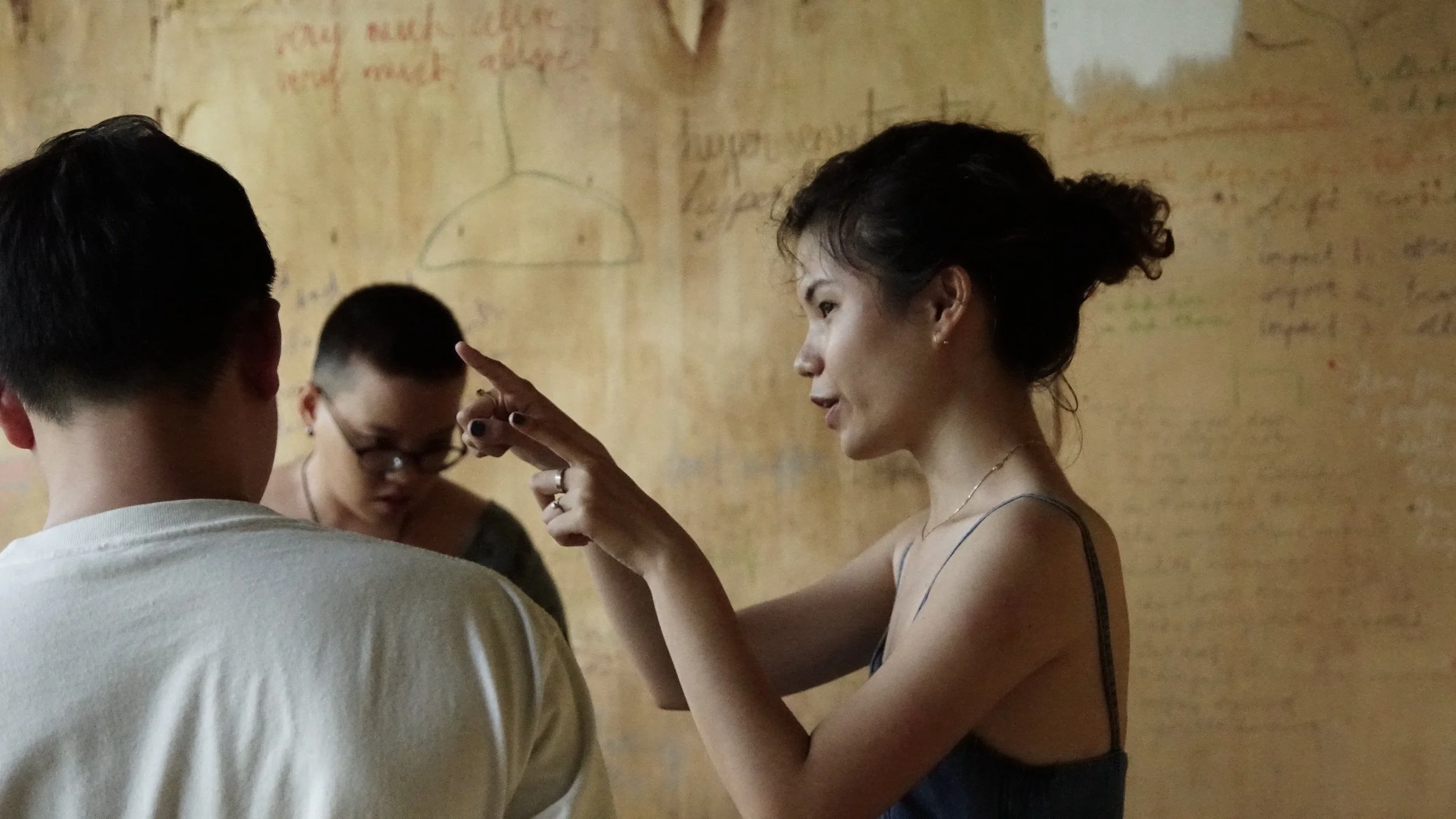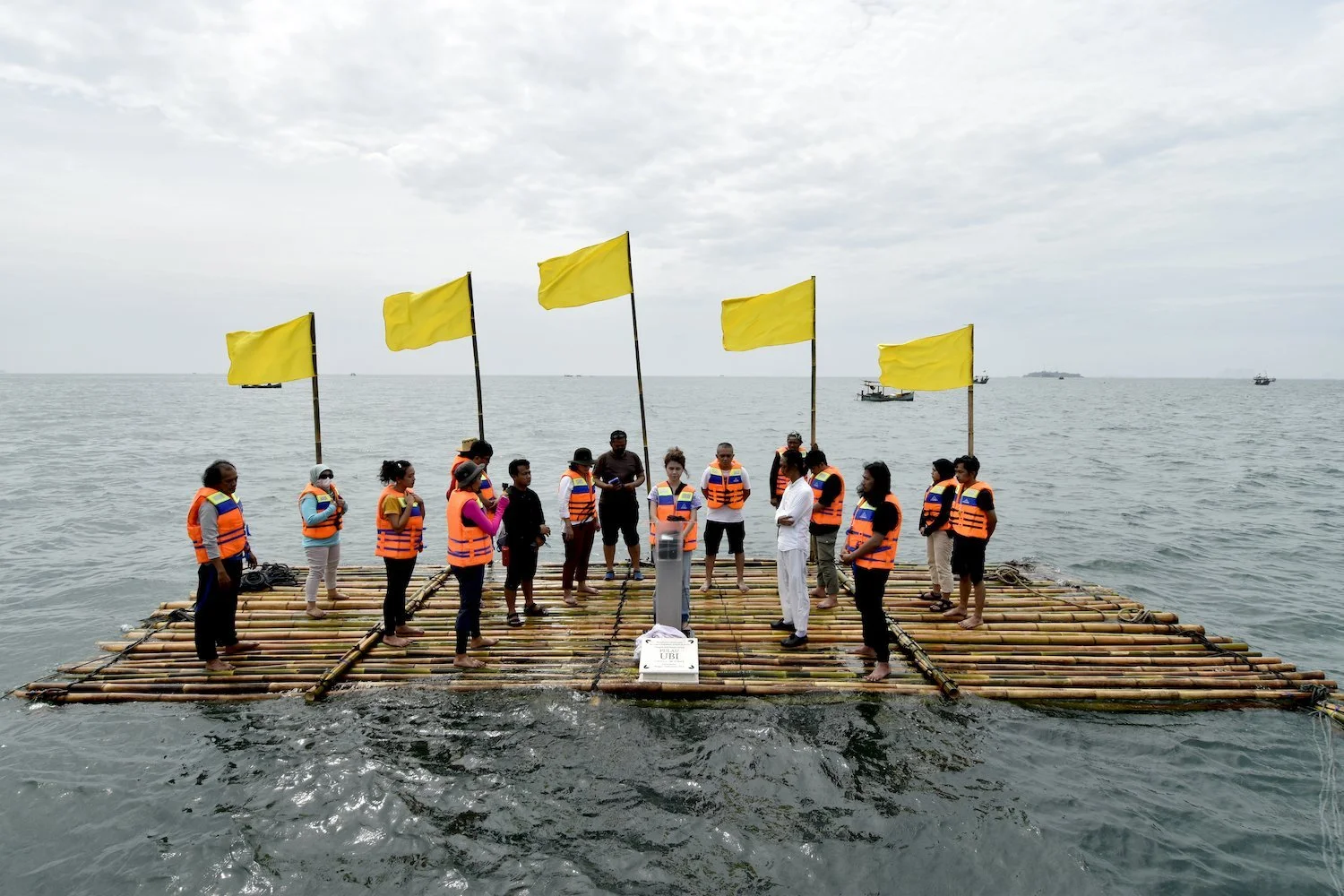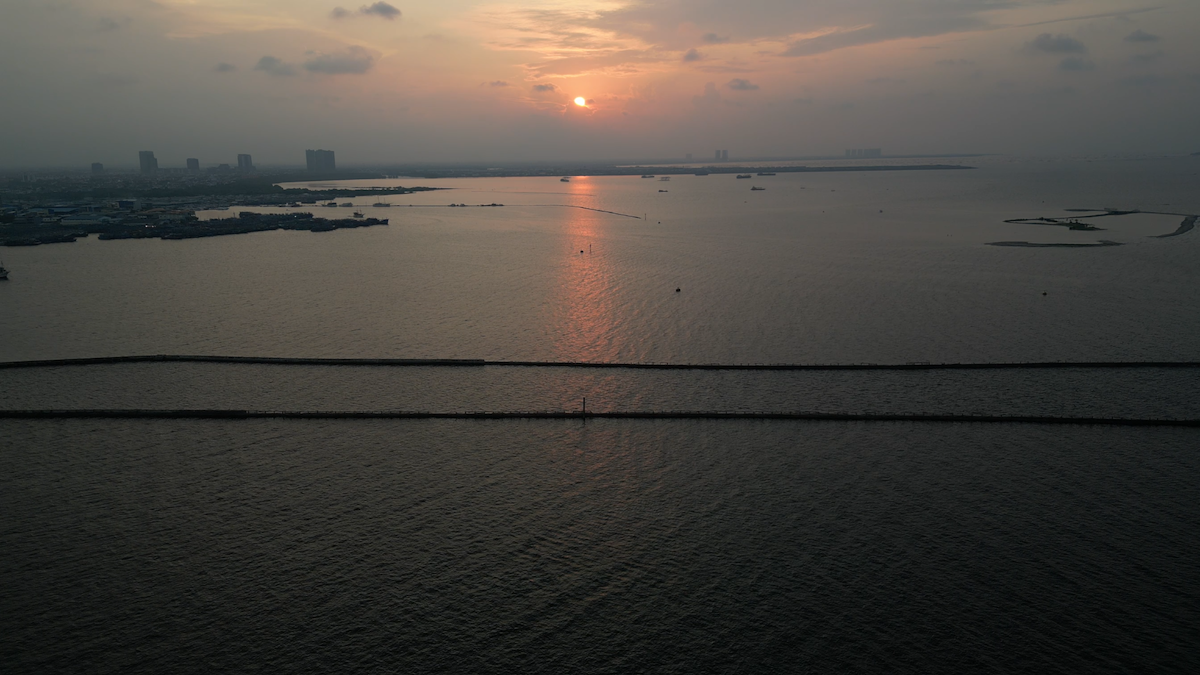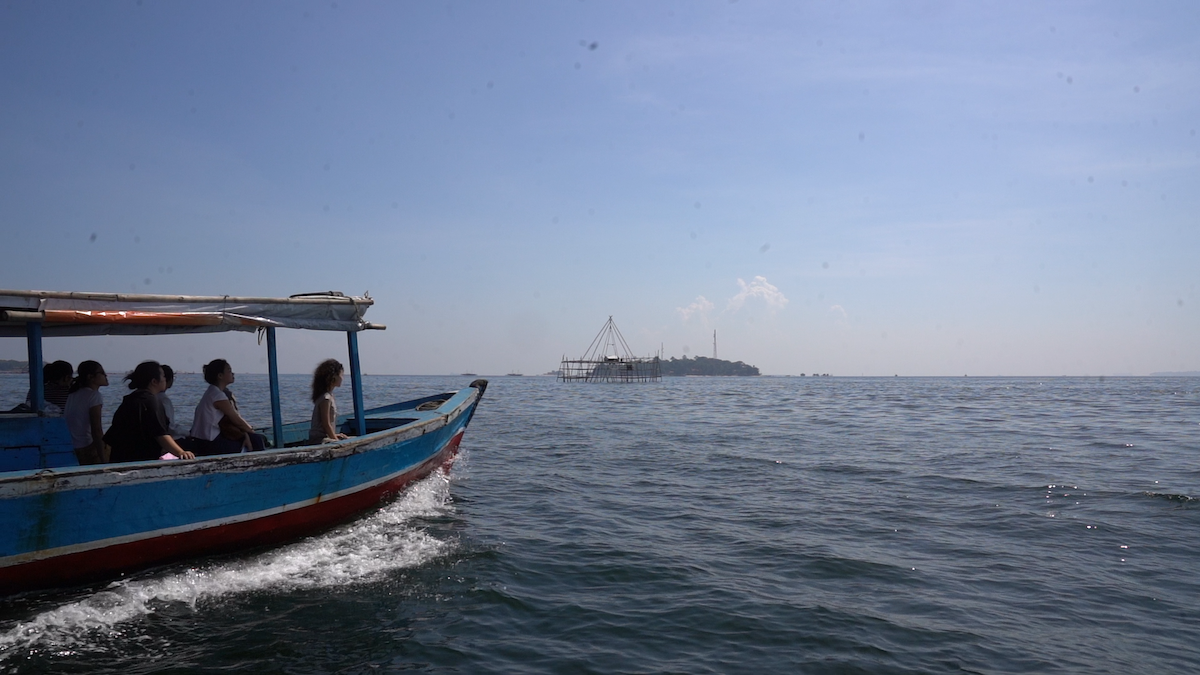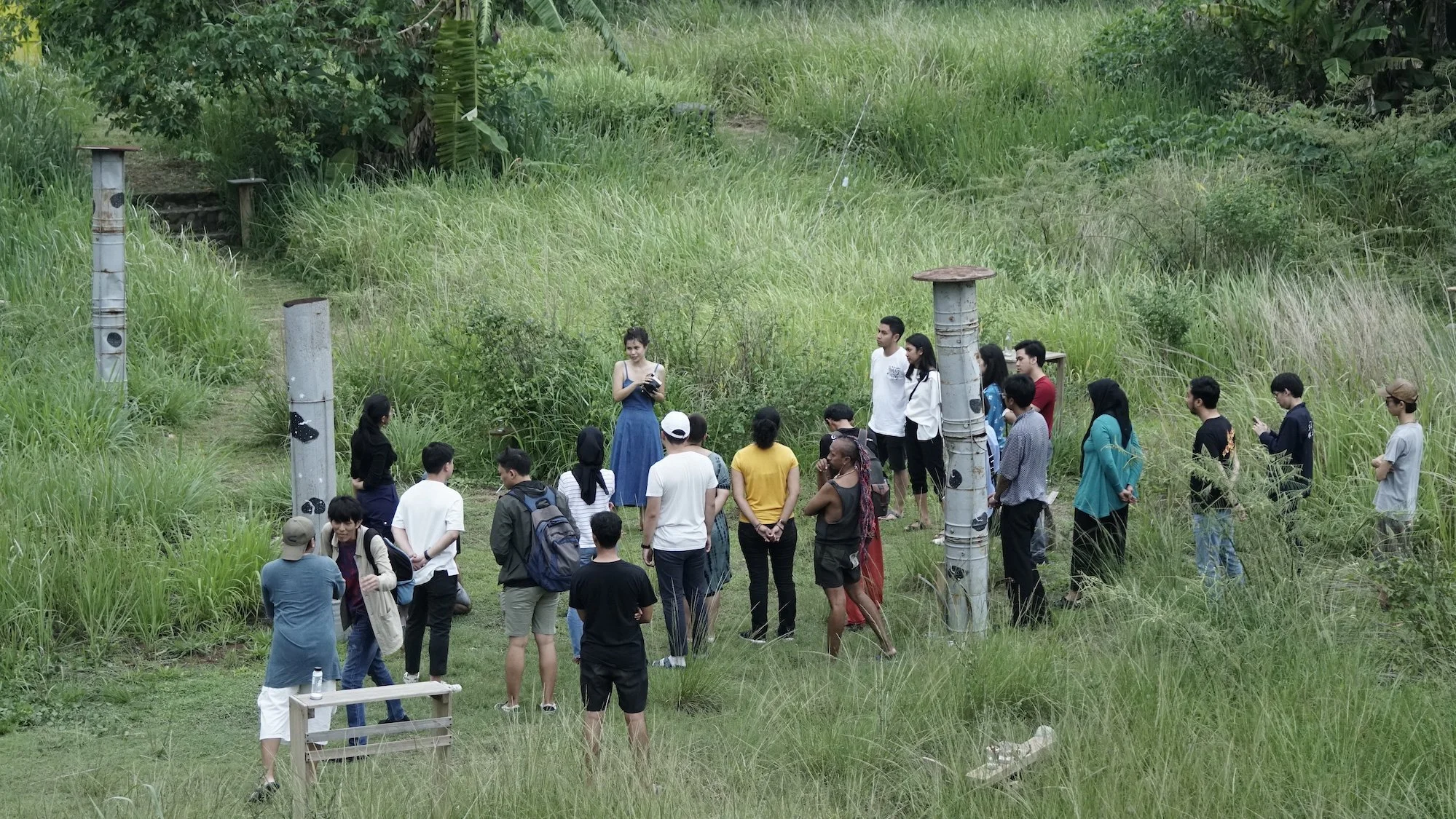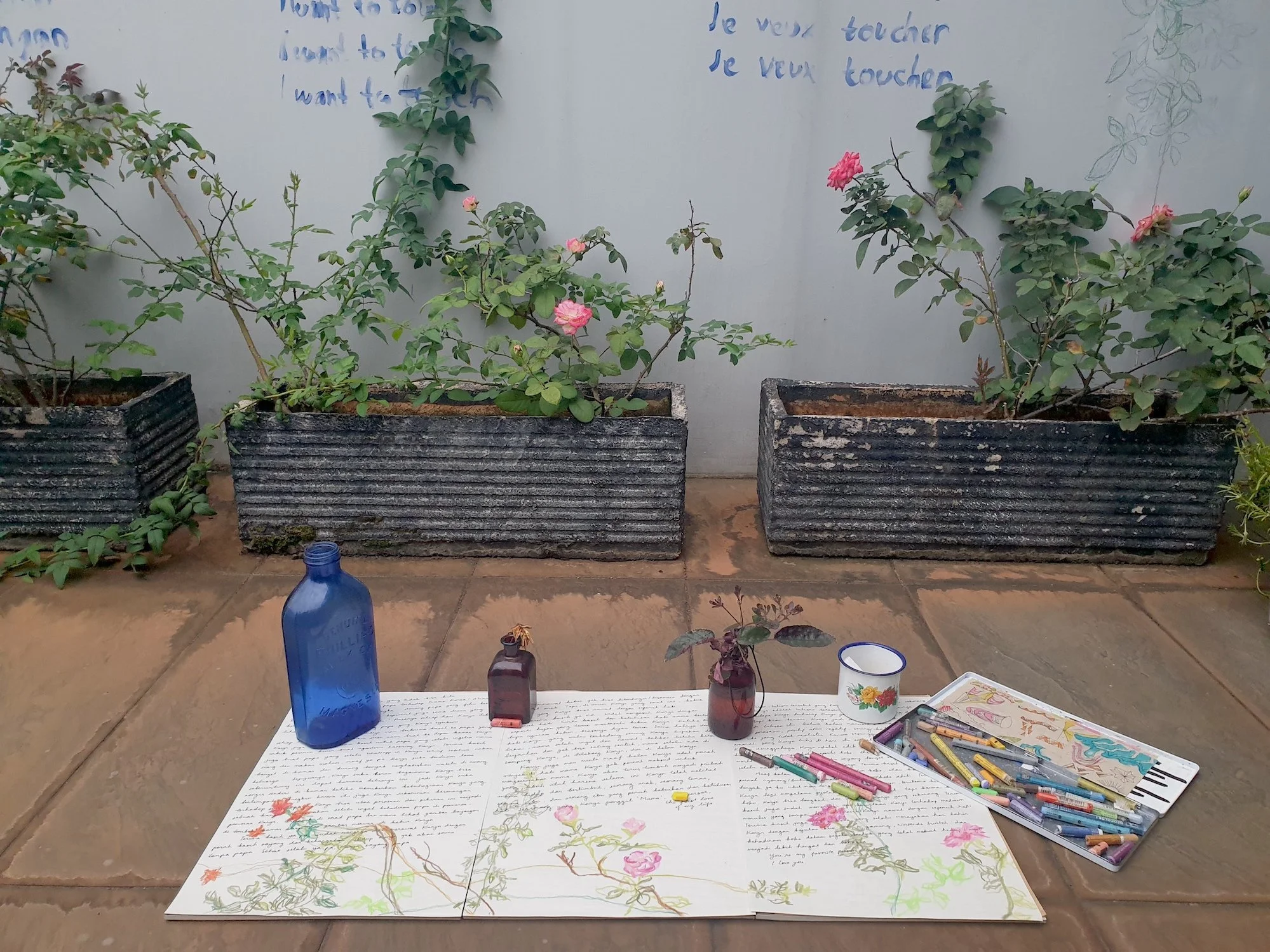Fresh Face: Alexandra Karyn
Making sense of the world through art
A&M's Fresh Face is where we profile an emerging artist from the region every month and speak to them about how they kick-started their career, how they continue to sustain their practice and what drives them as artists.
Alexandra Karyn.
Alexandra Karyn (b. 1995), familiarly known as Karyn is an Indonesian artist, art teacher and activist. Her kinship with art existed long before she pursued her Bachelor of Arts (Hons) degree in Fine Arts at Northumbria University, England. At an early age of three, she wrote on her bedroom walls, and it became witness to the formation of her early imaginary worlds. Subsequently, she cites Tumblr soft grunge/fairy core aesthetics in 2011-2013 as her inspiration. She has also been influenced by the music and literature she has read, such as Nick Drake’s 1972 album, Pink Moon and Água Viva by Clarice Lispector.
Irwan Ahmett, Pusaran Pusara, 2021, site-specific funeral with Alexandra Karyn narrating a eulogy in the Jakarta sea. Photo by Irwan Dinanto. Image courtesy of Irwan Ahmett.
Her works consist of elements of care, intimacy and compassion while at the same time voicing difficult issues such as climate crisis, grief and loss. In a collaborative production titled Pusaran Pusara (2021), a group of creatives mourn the loss of Pulau Ubi (Ubi Island), an island off the coast of Jakarta, where soil was dug up to build Soekarno-Hatta International Airport in Cengkareng. They gathered above a bamboo raft, in a spot that was once a land; a eulogy was delivered and a headstone is placed to remember that the ambition of urbanisation has had a negative impact on the ecology. Karyn is one of the mourners and one of the eulogy narrators in this performance.
Alexandra Karyn, latitude in longitude, 2022, site, situation, and sound. Carried out within the framework of the Fellowship for Situated Practice Program of BAK, basis voor actuele kunst, Utrecht. Photo by Malik Asher. Image courtesy of the artist.
Elements of nature are involved in the creation of Karyn’s works too, such as the sea and the land around her. It may look subdued, but its existence is essential to deliver her messages of a world under crisis. Her fellowship at basis voor actuele kunst (BAK) in Utrecht resulted in latitude in longitude (2022), a site, situation and sound work. Observants were invited to join her in places that overlook the sunrise, sunset, and moonrise along the Jakarta coastline. While listening to the movement of water, one could silently contemplate the changing faces of Jakarta, from a sinking mosque to land reclamation. In Bearing Witness (2019), her surroundings in Rumah Tangga an artist-run space, became her focal point. She witnessed how the different inhabitants: people, trees, grass, animals, coexist and support each other in their daily life.
Karyn writing in Rumah Tangga studio. Photo by Patar Pribadi. Image courtesy of the artist.
In Karyn’s works, she talks about the dangers of ecological crisis, land reclamation and capitalism persistently. But instead of pushing the message as a sound, she slips it gently into the everyday silences, following “passive activism and active pacifism”, her method of putting forward care and compassion in advocacy work.
Interview
Alexandra Karyn, Bearing Witness, 2019, land art at Rumah Tangga. Photo by Patar Pribadi. Image courtesy of the artist.
Could you talk about early influences or experiences in life that had a significant impact in your artistic journey. How did they inspire you to pursue a career in art?
My encounter with art started with a daily practice of writing. I think I was around three years old when I began writing forms on my bedroom walls, then my father gave me his office notebook to write on and I continued to draw words that I could only remember now as imagined worlds. That was probably the most influential experience that shaped my deep faith in both art and writing, because I found love in its daily practices, which is when I had begun to discover love itself.
Art often evolves over time. How has your art evolved since you first became an artist?
My "art", in a more formal sense, first started as a way to give shape to my anxieties, which were mostly about my 18-year-old feelings and sense of place in this world. Art was firstly a language. Throughout the years, art becomes a way to overcome these anxieties. Art then became a tool of going beyond temporary states. And lately, art has been a way to make more known the anxieties of the world. Art is now to me, a language of the eternal. I want to become a better listener.
“My “art”, in a more formal sense, first started as a way to give shape to my anxieties, which were mostly about my 18-year-old feelings and sense of place in this world.”
Aside from being an artist, you are also an art teacher at Erudio Indonesia and an environmental activist. Are there any challenges that you face from pursuing different roles? And how has your role as a teacher and activist influenced your works?
I faced no spiritual challenges because everything seems to be a useful component of a larger picture. These two roles have significantly deepened my capacity to love, which I see as a verb instead of a noun. And so inevitably, I go towards learning and experiencing the different kinships in the ecologies of the world. Silence and sound, the water and the body, human and more-than-human, hope and hopelessness, faith and languages, prayers-songs-poems, life, death and dreams, these are now the central themes of my work.
Alexandra Karyn, Memory is a flowering ripple in the water, 2023, participatory site-specific ritual. Photo by Patar Pribadi. Image courtesy of the artist.
You recently showcased Memory is a flowering ripple in the water (2023) in Elegi Buih exhibition at Art Agenda. How did the opportunity for the show come about? What was the process like and were there any challenges in preparing for it?
Several months ago, my best friend Ella Wijt, who had exhibited at Art Agenda before, spoke about me and my works to Stella Wenny, the exhibition's curator. We then had a call one afternoon and talked about the prevalence of the sea in my work, about grief and loss, and this game that I played called Spiritfarer which ended up significantly inspiring the work's conception.
The process was mostly anchored around the emotional and logistical preparations, but because it was a site-specific participatory work, I could only prepare up to a certain point, and the work sort of happened after. On the day of the work, I was almost just there to witness its unfolding and be led by everyone else who was there to participate, and for this I would like to thank all of my fellow exhibiting artists in the ‘Elegi Buih’ exhibition.
You have worked with various mediums, such as text, site-specific performance and video. What made you decide to weave together all three mediums for Memory is a flowering ripple in the water (2023)? And what kind message do you intend to express through this work?
In every dream, there would be varying elements encompassing its ethereal bodies. These elements are expansive yet so imperfectly intentional. The hope for this work is to create some sort of a continuous dream state in the fabric of reality, the way a wave is continuously an ocean, and death, continuously a character of life.
The message itself comes from the flowering ripples: to remember to hold each other in the eternal meanwhile.
Photograph of final public tour at Rumah Tangga. Photo by Patar Pribadi. Image courtesy of the artist.
Alexandra Karyn, latitude in longitude, 2022, site, situation, and sound. Carried out within the framework of the Fellowship for Situated Practice Program of BAK, basis voor actuele kunst, Utrecht. Photo by Patar Pribadi. Image courtesy of the artist.
In 2019, you completed a residency at Rumah Tangga an artist-run space in Indonesia and from 2021 to 2022, you were a fellow at basis voor actuele kunst (BAK) in Utrecht, the Netherlands. Could you share more about the experience? How did the new surroundings and facilities impact your creative process and the work you produced during your residency and fellowship?
Walking into any new experiences and environments, I try to create something about and/or with my immediate surroundings; something near, or involving nearnesses. I realise now that what people might call curiosity, I call intimacy. I think this is a recurring pattern that underlines all of my work thus far, no matter the medium.
Rumah Tangga work was a site-specific study of landspeak and coming to life together with its inhabitants. BAK work was a watery inquiry of radical listening as a mode of being in a crisis-ridden world. With intimacy, every work becomes site-specific, like shrines to a devoted time.
“Walking into any new experiences and environments, I try to create something about and/or with my immediate surroundings; something near, or involving nearnesses.”
Who has been a mentor or an important artistic influence? And why?
Most of who I am and who I have been all my young adult life so far is simply a played out soft grunge/fairy core Tumblr aesthetic circa 2011-2013, which is a genre mashup I call ‘fatal tenderness'. The rest of me is a labyrinthine of soft brutalities. Nick Drake’s 1972 album, Pink Moon. Andrei Tarkovsky’s 1983 film, Nosthalgia. My visit to the Mark Rothko Room in 2015. Playing The Legend of Zelda: Breath of the Wild all throughout 2018-2019. Allowing faith to re-enter my life through love and friendship during the Rumah Tangga and House Archipelago residencies. Reading Água Viva by Clarice Lispector during the pandemic lockdown. Sea anemones. Butterflies. Blue whales. And many more, which are beyond my memories, my language, or this lifetime.
What was one important piece of advice you were given?
"Wherever you are is the entry point."
As an artist and art teacher, how do you see the role of art education evolving in the future? And what can be improved from the current state?
I can imagine a point in this life in which art education will be more prevalent and pertinent, more subversive. Perhaps we could be a little braver and imaginative with our hopes. I personally think ‘Hope’ is the better spelling. There is so much potentiality in the languages of art… ones that could speak of the repairing of a broken world.
What are your hopes for Indonesia's local art scene, and regionally as well?
That there would be more unceasing and diverse discussions about the ecological crisis, displacement crisis, and other intersectional injustices in the world. Along with that, I also hope to see more institutional critiques, because, well, the art world can be oppressive too.
Photograph of the artist's garden. Image courtesy of the artist.
Could you share upcoming projects, and goals that you wish to achieve?
I am in the early stages of writing and illustrating children's books as wombs of dreams, poetics, and radical imagination. This is my most impassioned project sitting at the centre of my heart for as long as I can remember, and so I am taking my time.

